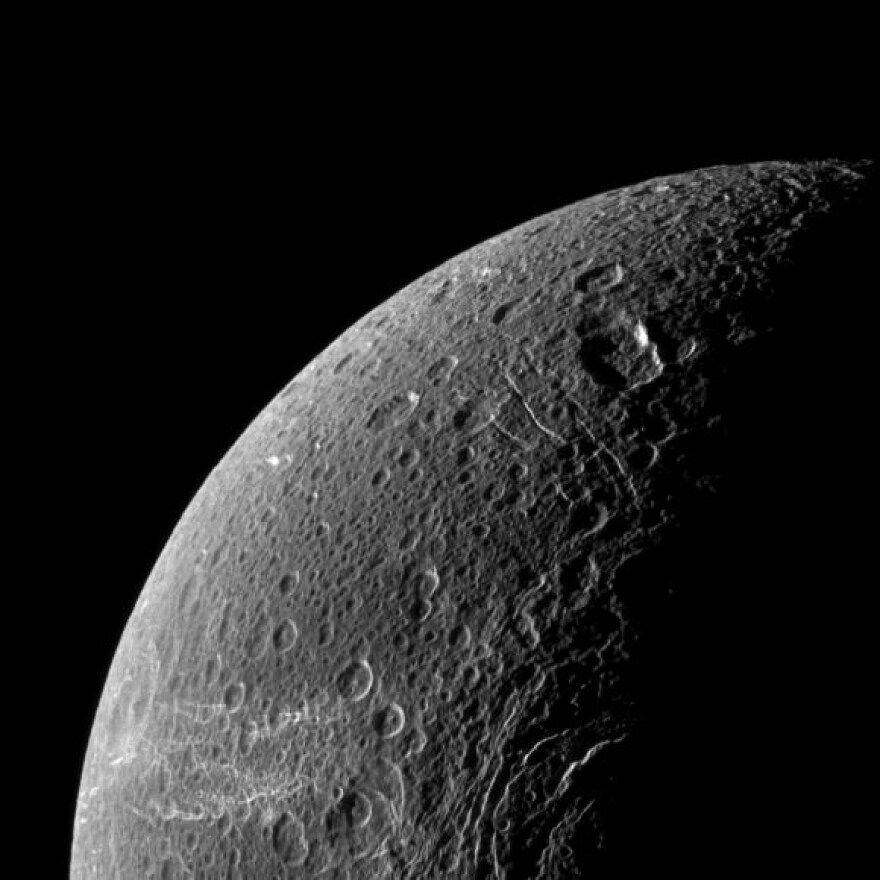A group of Newcastle High School (NHS) students and three of their science teachers are in the process of constructing a small satellite to be placed on the surface of the moon. They’re participating in the Global Lunar Expedition for Everyone (GLEE), which aims to expose students to future careers in space exploration and research. Newcastle is currently the only high school in Wyoming participating in the program.
Their job is to create a small 'LunaSat' satellite the size and depth of a credit card that will then be sent to the moon with approximately 500 other satellites to conduct research.
"This is something that Dr. Andrew Young of the Wyoming NASA Space Grant Consortium has been working with us on for three years or so," said Jim Stith, one of the NHS science teachers involved in the project. "It's been delayed due to COVID and he's kind of brought this to us as a 'Hey, you could get your kids interested in working on something that actually goes to the moon.' So we applied and heard nothing for a number of years, and finally, they said 'Hey, apply for the in-person workshop.' We learned how to use the LunaSats and we brought back the first prototype of that."
The satellites will be used for research purposes and are slated to be launched sometime in 2023, and research on several topics is set to be conducted. One of the major objectives is to eventually provide for future human travel back to the moon.
"We could be looking at research on a proposed lunar colony site in the future or landing site. We're just there to collect data through this dispersed science network," Stith said.
The University of Colorado Boulder has been working on the prototype of the satellite and is also overseeing GLEE the program.
"Engineering students there and science students there have been managing the project. So, they've actually developed the board itself to accept Arduino code so that we can more easily have our students interact with that board and then develop their own experiment using a certain number of sensors that are already going to be on the board itself," said Zach Beam, another NHS science teacher.
Beam also added that students at UC Boulder are still trying to thin down the satellite's size from what is now about four to five credit cards to just one.
"They wanted to give us the boards and give us the opportunity to start playing with them. [UC Boulder is also] providing the code that actually works, so that we can kind of mix and match what we would like to do with our students so that ultimately our students can pick the experiment they want to run," Beam said.
Stith said the current plan is to have the satellites be distributed by a lunar lander.
“What they’ve looked at is like a rotating box that has a spring in it that spins up and then shoots them out, covering a large area,” Stith also said.
The rocket that transports the satellites to the moon is being provided separately from GLEE. Currently, what this entails is yet to be determined.
Students in grades 9 through 12 are participating in the design and coding of the satellites. Another NHS science teacher, Doug Scribner, is also part of the project.
"So we've got a preliminary group kind of organized, and I think this spring we're going to try to get them together and start training them. I guess the official start-up hasn't happened on our side except for our training [the teachers, who attended an in-person event last year in Colorado]. But I would say we've probably got 10, 20 students that have interest right away in getting in the project," Beam said.
Any data collection that the satellites will obtain will have to be done in a relatively brief time span. Due to the rotation and orbit of the moon and the fact that the satellites will be solar-powered, Stith estimates that this period will be less than a month. Data will be shared between the satellites due to their limited capabilities of transmitting it over large distances. The lunar lander will have capabilities to transmit data back to earth. Stith said there may be a bit of a delay, which could be a few days or a week.
"It will be on the moon indefinitely until somebody comes and picks up our trash," said Stith jokingly. "They should function for, I believe it was 23 days or 26 days. We're going to land them just kind of what we would consider lunar sunrise, and then as the moon goes around the earth, eventually it's going to go and hit sunset, and then it will be very cold, and they will break."
The program is still open to other schools that are interested in partaking in an out-of-this-world experience. Interested high schools and colleges can apply through the GLEE website.
Newcastle High School is also participating in the TechRise program, which aims to conduct research in space and the upper atmosphere.







